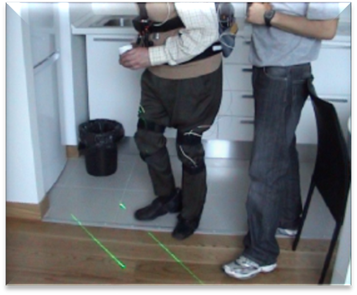Kinect brukes til å hjelpe pasienter med Parkinsons
Kinect tok aldri helt av, og som et resultat produseres den ikke lenger. Men Brunel University London har funnet en bruk for enheten - den kan nemlig brukes til å hjelpe pasienter med Parkinsons.
"Built using Microsoft's now-obsolete Kinect peripheral, the system monitors for and detects freezing of gait (FOG) in Parkinson's patients," står det i pressemeldingen. "When an occurrence is observed a laser casts visual cues on the floor according to the patient's location, helping them release their gait and improve their movement." "Freezing of gait" er, kort fortalt, en tilstand hvor bevegelsene til pasienten 'fryser fast" og hindrer dem i å gå.
Systemet forklares mer utfyllende i Journal of Disability and Rehabilitation: Assistive Technology, og støttes av Parkinson's UK, med håp om å kunne videreutvikle det slik at det kan installeres hjemme hos pasientene. Utviklingskostnaden til prototypene er på bare £137, men da er jo ikke kostanden til PCen som styrer systemet inkludert.

"Freezing of gait is one of the most disabling symptoms in people with Parkinson's, affecting its sufferers by impacting their gait performance and locomotion," sa Dr Amin Amini, en forsker fra Department of Electronic and Computer Engineering ved Brunel, som er sjef for forskningsprosjektet.
"It is an episodic phenomenon that prevents the initiation or continuation of a patient's locomotion, and it may lead to a loss of independence or frequent falls."
Systemet fungerer ved å overvåke hvordan beina til pasienten beveger seg, og ser spesifikt på vinkelen på kneet, i tillegg til hvilken vei hodet vender seg, noe som fører til økt nøyaktighet og færre falske positive resultater.
"The main reason that Microsoft Kinect was used is that it doesn't require the patients to attach any sensors to their bodies in order for the system to detect FOGs," sa Dr Amini. "The Kinect can unobtrusively detect and track subjects' body movements without any attachments, which makes it an ideal device for such applications."
Når FOG har blitt identifisert, projiserer systemet to laserlinjer på gulvet, som ligger vinkelrett i forhold til den retningen pasienten vender seg, før den bruker visuelle hint som stimulerer bevegelse i pasienten, og låser opp "fastfrysingen".
<bild></bild>
"We tested the system's capabilities and detection success rate by inviting healthy participants during the prototype phase, as well as inviting real Parkinson's disease patients to a focus group, where we demonstrated our system in action," sa Dr Amini.
Hva synes du om denne bruken av konsolltilbehør?
<bild></bild>